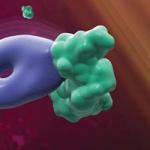
William Copeland, Ph.D.
Senior Investigator
Genome Integrity & Structural Biology Laboratory / Mitochondrial DNA Replication Group
NIEHS
Research Topics
Mitochondrial diseases are devastating disorders for which there is no cure and no proven treatment. About 1 in 4000 individuals is at risk of developing a mitochondrial disease sometime in their lifetime. Half of those affected are children who show symptoms before age five, and approximately 80% of them will die before age 20. The mortality rate is roughly that of cancer. The human suffering imposed by mitochondrial and metabolic diseases is enormous, yet much work is needed to understand the genetic and environmental causes of these diseases. Mitochondrial genetic diseases are characterized by alterations in the mitochondrial genome, as point mutations, deletions, rearrangements, or depletion of the mitochondrial DNA (mtDNA). The mutation rate of the mitochondrial genome is 10ñ20 times greater than of nuclear DNA, and mtDNA is more prone to oxidative damage than is nuclear DNA. Mutations in human mtDNA cause premature aging, severe neuromuscular pathologies and maternally inherited metabolic diseases, and influence apoptosis.
The primary goal of the Mitochondrial DNA Replication Group is to understand the role of DNA replication in the production and prevention of mutations in mtDNA in healthy persons and disease patients. We are investigating the proteins that encompass the mtDNA replication machinery, which include the DNA polymerase γ (encoded by the POLG gene) and its accessory subunit (POLG2), the mtDNA helicase, and the single-stranded-DNA-binding protein. Driven by its health relevance, research is focused on understanding how mitochondrial DNA replication proteins contribute to point mutations and deletions in mtDNA and how these proteins carry out mtDNA replication and repair and deal with DNA damage. We are also investigating how nucleoside reverse-transcriptase inhibitors used in AIDS therapy induce mitochondrial toxicity and why pol γ is sensitive to these analogs. Enzymology is used to ascertain the inhibition by antiviral nucleoside analogs. Finally, research is focused on understanding the consequences of disease mutations in the genes for pol γ (POLG), its accessory subunit (POLG2), and the mtDNA helicase, and how these mutant variants cause mtDNA mutagenesis and mtDNA depletion. Nearly 200 disease mutations have been identified in the POLG gene that cause deletions or depletion of mtDNA. POLG gene mutations cause Alpers-Huttenlocher syndrome, childhood myocerebrohepatopathy spectrum disorders, myoclonic epilepsy myopathy sensory ataxia, ataxia neuropathy spectrum disorders, and progressive external ophthalmoplegia with or without sensory ataxic neuropathy and dysarthria. Structure-function studies, enzymology, animal models, and single-cell eukaryotic genetic models are used to elucidate the consequences of these disease mutations.
Biography
Dr. Copeland received his Ph.D. in chemistry/biochemistry from the University of Texas at Austin in 1988. He completed his postdoctoral training at Stanford University School of Medicine, Department of Pathology studying the human DNA polymerase alpha/primase complex. He joined NIEHS in 1993. He currently heads the Mitochondrial DNA Replication Group and is Chief of the Laboratory of Molecular Genetics at the NIEHS.
Selected Publications
- Riccio AA, Bouvette J, Perera L, Longley MJ, Krahn JM, Williams JG, Dutcher R, Borgnia MJ, Copeland WC. Structural insight and characterization of human Twinkle helicase in mitochondrial disease. Proc Natl Acad Sci U S A. 2022;119(32):e2207459119.
- Lujan SA, Longley MJ, Humble MH, Lavender CA, Burkholder A, Blakely EL, Alston CL, Gorman GS, Turnbull DM, McFarland R, Taylor RW, Kunkel TA, Copeland WC. Ultrasensitive deletion detection links mitochondrial DNA replication, disease, and aging. Genome Biol. 2020;21(1):248.
- Kaur P, Longley MJ, Pan H, Wang W, Countryman P, Wang H, Copeland WC. Single-molecule level structural dynamics of DNA unwinding by human mitochondrial Twinkle helicase. J Biol Chem. 2020;295(17):5564-5576.
- Rahman S, Copeland WC. POLG-related disorders and their neurological manifestations. Nat Rev Neurol. 2019;15(1):40-52.
- Kaur P, Longley MJ, Pan H, Wang H, Copeland WC. Single-molecule DREEM imaging reveals DNA wrapping around human mitochondrial single-stranded DNA binding protein. Nucleic Acids Res. 2018;46(21):11287-11302.
Related Scientific Focus Areas

Molecular Biology and Biochemistry
View additional Principal Investigators in Molecular Biology and Biochemistry



This page was last updated on Wednesday, April 10, 2013